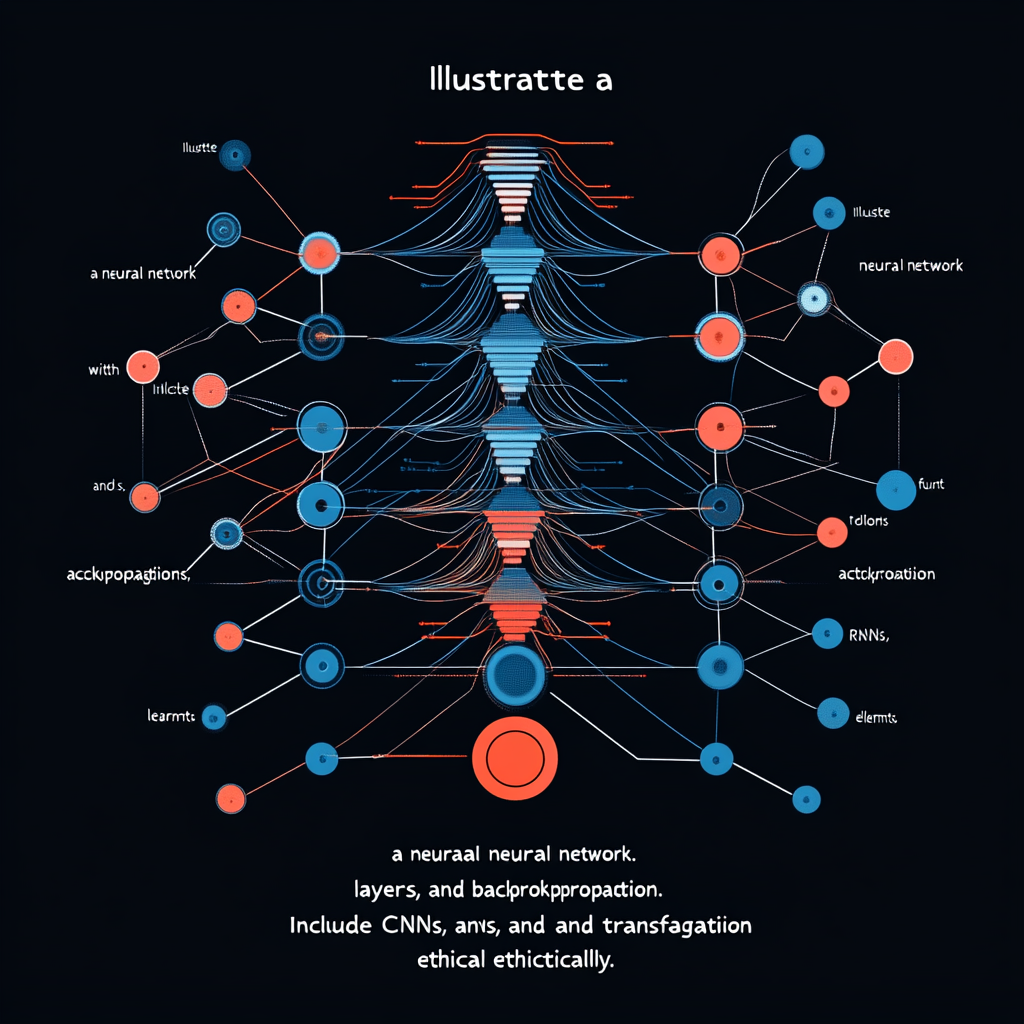
“Chinese Ceres-1 Rocket Successfully Delivers Weather Satellites to Orbit”
The Basics of Neural Networks
To grasp the magnificent world of neural networks, you need to master a few fundamentals:
a) understand what goes on inside a neural network's head and
b) learn how to train it effectively.
There’s a lot of buzz about neural networks these days. Yet, most folks remain blissfully unaware of what these enigmatic structures can actually do—it's as if they've stumbled upon a wizard's spellbook and just skimmed the cover. Let's unearth the magic, shall we?
First, let’s address a common misconception: neural networks aren't some sort of mystical being that operates on a whim. These networks, at their core, are mathematical models designed to identify patterns in data. Think of them as little brainy elves tasked with sorting through heaps of information, but don’t ask them how they do it because it’s a complex affair of algorithms and weights!
So, how does one begin their magical journey into the land of neural networks? Well, first off, you need to decide on the architecture. Oh, boy! There are layers upon layers that can make your head spin. Simple networks have a minimal number of layers, while deep networks – those are the culinary masterpieces, layered and baked to perfect crispness – use many layers, giving them the eerie ability to learn more complex patterns. The depth of understanding – that’s where the real fun begins!
Sifting through layers is just the start; you’ll also want to get comfy with the concept of activation functions. They are like the flavors in your favorite dish – they add a little kick, transform bland inputs into something flavorful. Common activation functions include ReLU (Rectified Linear Unit), which adds a bit of spice by transforming negatives to zeros, and sigmoid, which smoothly pulls the output between zero and one, perfect for probability assessments. Choose them wisely and discover how they influence the outcomes!
Now, let's tackle the training phase of our neural network. Think of it as feeding a puppy: consistency is key! The process of training involves presenting the network with data and adjusting the weights to minimize errors—like guiding that puppy to sit, stay, or roll over, you show it what to do until it learns. This is traditionally done with a dataset and the brutal honesty of loss functions that measure how far your predictions are from reality. If your network doesn’t get it right, it’s like that stubborn pup persistently chasing its tail.
Talking about training brings us directly to the techniques that help these networks learn faster and better. Enter backpropagation, the beloved method for adjusting weights throughout the layers. Here’s how it works: you feed the input data, get the output, and then calculate the error. The magic happens when this error gets distributed back to each layer, allowing each weight to be tweaked accordingly. Just like tuning a musical instrument—fine-tuning is essential for producing harmonious results!
But wait! We’re not done yet! Neural networks, when unleashed, can be notoriously greedy. They consume vast amounts of data, and you need to be mindful of overfitting. That's when your neural network becomes a know-it-all—performing exceptionally well on the training data, but stumbly-wumbly on new or unseen data. You can prevent this by ensuring your dataset is versatile and using techniques like dropout layers, which randomly ignore certain neurons during training. Think of it as giving your neural network some much-needed time off—it’ll return sharper and more versatile!
As you continue exploring, you’ll stumble upon the wonders of convolutional neural networks (CNNs) if you delve into image recognition. These networks understand the spatial hierarchies in visuals, making them the go-to for all things image-related. It’s like having an edited Instagram filter that highlights edges and features without distorting the essence of the image. Amazing, right?
If you fancy ransacking the treasure chest of sequential data like time series or text, recurrent neural networks (RNNs) are your best friends. With their memory cells, RNNs can keep track of previous inputs, allowing them to make predictions based on time dependencies. It’s like having an elastic band; it can stretch but snap back into place, remembering what happened just a moment ago!
And then there’s the delightful world of transfer learning, a technique as clever as it sounds. Why reinvent the wheel when you can adapt something that has already been built? By taking a pre-trained model and fine-tuning it to suit your specific task, you're saving time and reaping the benefits of previously accumulated wisdom. It’s like asking a master chef for their secret ingredient—adapting for your own culinary adventures!
As enticing as it would be to just play with neural networks and bask in their glow, don’t forget the duller side of this arcane art: the ethical implications. With great power comes great responsibility. The same neural networks that can revolutionize healthcare by predicting diseases can also be the backbone of biased decision-making if not handled with care. Never lose sight of the impact your work may have. Ensure your network is fair and just—because when it comes to AI, we should aim for a future that benefits everyone.
Armed with this knowledge, you now have the tools to embark on a journey into the heart of neural networks. Whether you're trying to program a simple chatbot or designing a breakthrough solution in a complex problem space, the essence lies in understanding the core principles and having fun while experimenting.
Want to stay up to date with the latest news on neural networks and automation? Subscribe to our Telegram channel: @channel_neirotoken!

